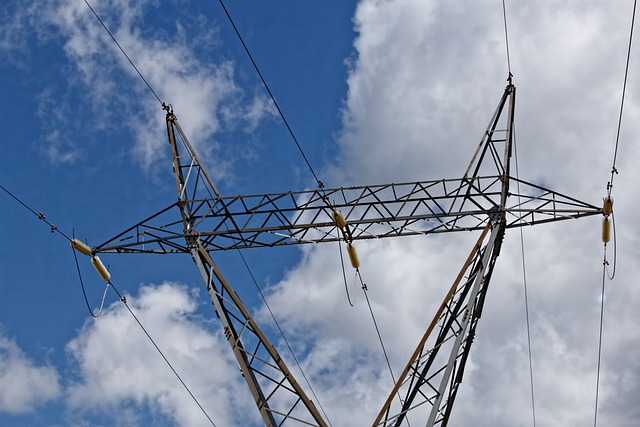Massive cogen plant sits idle
MONTREAL, QUEBEC - The massive, state-of-the-art Bécancour cogeneration electricity plant is capable of powering 550,000 homes. At the moment, however, the only action its gas turbines are getting comes from the dehumidifiers that prevent them from rusting out.
Apart from providing steam for an industrial park neighbour, the plant, 150 kilometres northeast of Montreal, sits largely idle, victim of policies and planning in a province overrun with electricity.
Such is the extraordinary electricity surplus in Quebec that several hundred million dollars are being spent and lost each year dealing with the problem, and consumers are footing the bill.
The $500-million Bécancour plant is the most obvious example. Hydro-Québec, the provincial electricity monopoly, is forced to pay nearly $200 million each year to keep it closed, including $150 million to honour its contract with TransCanada Energy, the Alberta company that owns the plant.
Despite this, the government is pushing ahead with even more massive hydro dams, as well as wind farms and mini-hydro projects, some privately owned.
Quebec's government says it must promote regional development and at the same time prepare for the future, when the economy sparks up again and others are searching for cheap, green energy.
The hope is that demand might actually meet the supply.
The main consumers' group considers it variously scandalous or politically expedient – but more than anything an affront to Quebecers' pocketbooks.
"There was bad planning, yes, that's the least we can say," declares Jean-François Blain, energy regulation and policy analyst for the Union des Consommateurs.
"And since Hydro-Québec transfers all its costs to its clients," he bristles, "there is no risk for its errors."
Quebec is by far Canada's largest producer of electricity, largely due to its abundance of hydroelectricity sources.
Hydro-Québec generates billions for the province and, through a government-decreed obligation, provides Quebecers with some of the cheapest electricity anywhere.
Its annual reports are typically filled with self-congratulation and rosy outlooks.
But those who pay attention to the energy picture aren't quite so impressed.
Hydro-Québec recently forecast a surplus of 7.7 terawatt hours TWh for 2011. Less than the 10 TWh for this year, but still, that's enough electricity to power 770 billion 100-watt light bulbs for an hour.
"We've got electricity through the wazoo," says Daniel Breton, an energy activist with a group called Maîtres Chez Nous – 21st Century, which seeks independence from fossil fuels.
"In a situation predicted to be in surplus until at least 2023, to launch more is completely irresponsible," Breton says.
Apart from Bécancour's closure, Hydro-Québec's distribution side has had to defer the delivery of huge amounts of electricity from its production division.
Meanwhile, there are newly finished wind turbines coming online all the time. And the government recently approved more, to triple that output. Good for the environment, but not needed, critics maintain.
This electricity is sold at a loss, the consumers' union claims.
All Hydro-Québec spokesperson Guy Litalien will say about that is: "We must respect the contracts that are there... we must integrate them and manage them."
And last June, Quebec announced Hydro-Québec would be contracting for yet more energy from 13 "mini" hydro projects, some private, for a total of 150 megawatts.
Natural Resources Minister Nathalie Normandeau wasn't available for an interview. But her spokesperson Marie-France Boulay said the idea is to create wealth in regions "that need help getting sources of revenue."
"Hydro-Québec doesn't want to buy this energy in certain cases but is forced to because the government wants to do wind energy, biomass, etcetera," says Pierre-Olivier Pineau, energy expert at HEC, the business school associated with the Université de Montréal. "It's the same thing with these mini hydro projects. The government forces it to buy the energy.
"It's political marketing," Pineau says, not to mention, he adds, a reward for businesspeople in these regions who could help the government the next election.
Of course, that's not all. Quebec in 2009 began construction of another huge, $6.5 billion hydroelectric project on the Romaine River, north of the Gaspé peninsula, consisting of four dams and reservoirs and a capacity of 1,550 megawatts, three times that of Bécancour.
The government had to spend hundreds of millions to try and appease local Innu, while environmentalists decry the damming of one of the last virgin rivers in Quebec, noting that that hydroelectricity isn't as "green" as the province would lead others to believe.
"It's renewable but not green," says Alain Saladzius, co-founder of Fondation Rivières. "There are consequences on flora, fauna, human impacts, and large destruction of the ecosystem."
Meanwhile, Hydro-Québec is still in the design stage of a 1,200-megawatt Petit-Mécatina hydroelectric project.
Along with these new plans for more electricity comes the hope that Quebec will be able to export what it doesn't need to its neighbours.
The government says Hydro-Québec's exports are highly profitable and it must plan for more. As the economy picks back up, Boulay says it must be ready to "deliver energy to the totality of industry at an advantageous price."
Mentioning the anticipated future of more electric cars, meaning higher consumption, "The government is preparing for the long term," she adds.
But Université de Laval energy expert Jean-Thomas Bernard says profits aren't guaranteed.
Dramatically increased natural gas reserves in both the U.S. and Canada – largely driven by new shale gas finds, for which Quebec has great potential – have driven down prices for gas and with those, electricity.
Bernard expects the gas price to remain low for years to come – about 5 to 6 cents per kilowatt hour. Meanwhile, production costs for the Romaine are expected to be at least 10 cents, not counting transport.
For Bernard, the government's vision is blurred.
"It's myopic," he offers. "It sees only job creation and economic activity. But unfortunately that will not create the enrichment of Quebec.
"It will only contribute to its poverty."
Related News

Canada’s Opportunity in the Global Electricity Market
TORONTO - As global electricity demand continues to surge, Canada finds itself uniquely positioned to capitalize on this expanding market. With its vast natural resources, advanced technology, and stable political environment, Canada can play a crucial role in meeting the world’s energy needs while also advancing its own economic interests.
The International Energy Agency (IEA) has projected that global electricity demand will grow significantly over the next decade, driven by factors such as population growth, urbanization, and the increasing electrification of various sectors, including transportation and industry. This presents a golden opportunity for Canada, which boasts an abundance of renewable…




